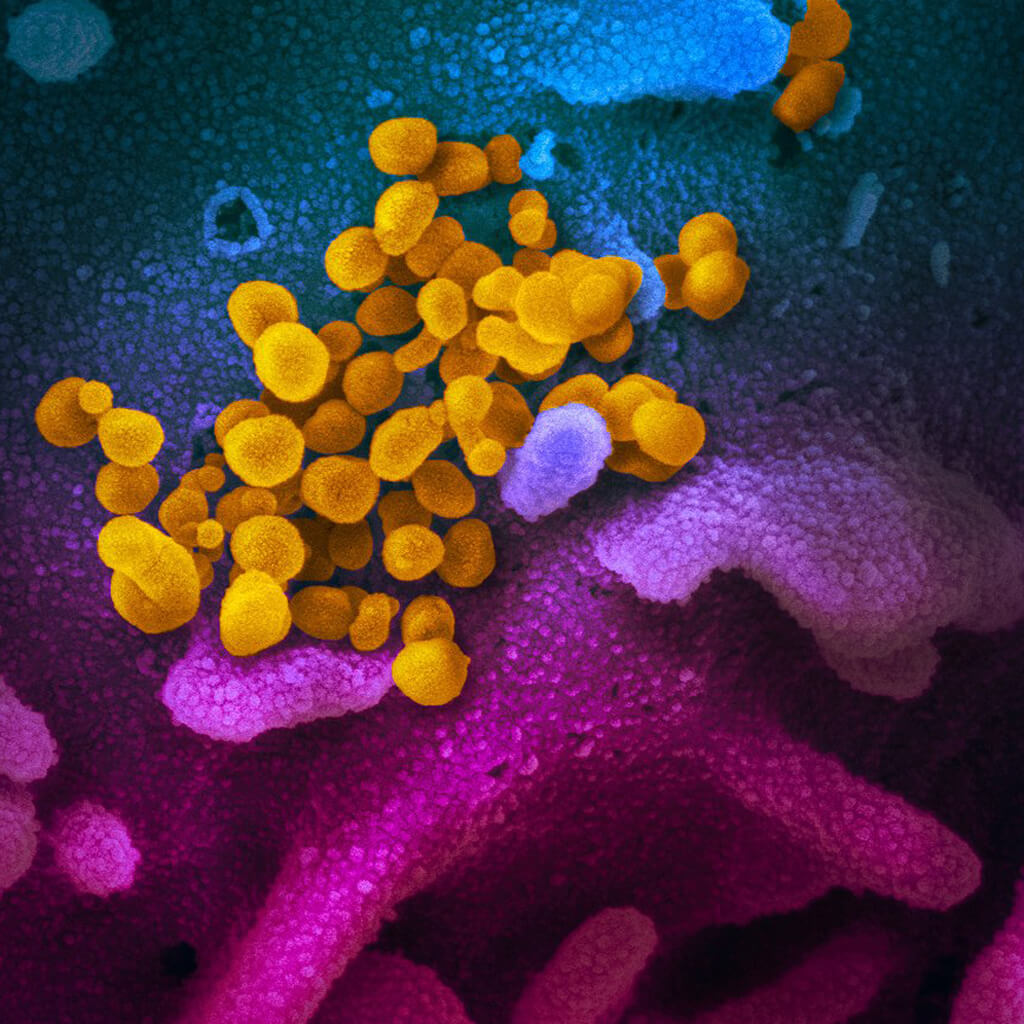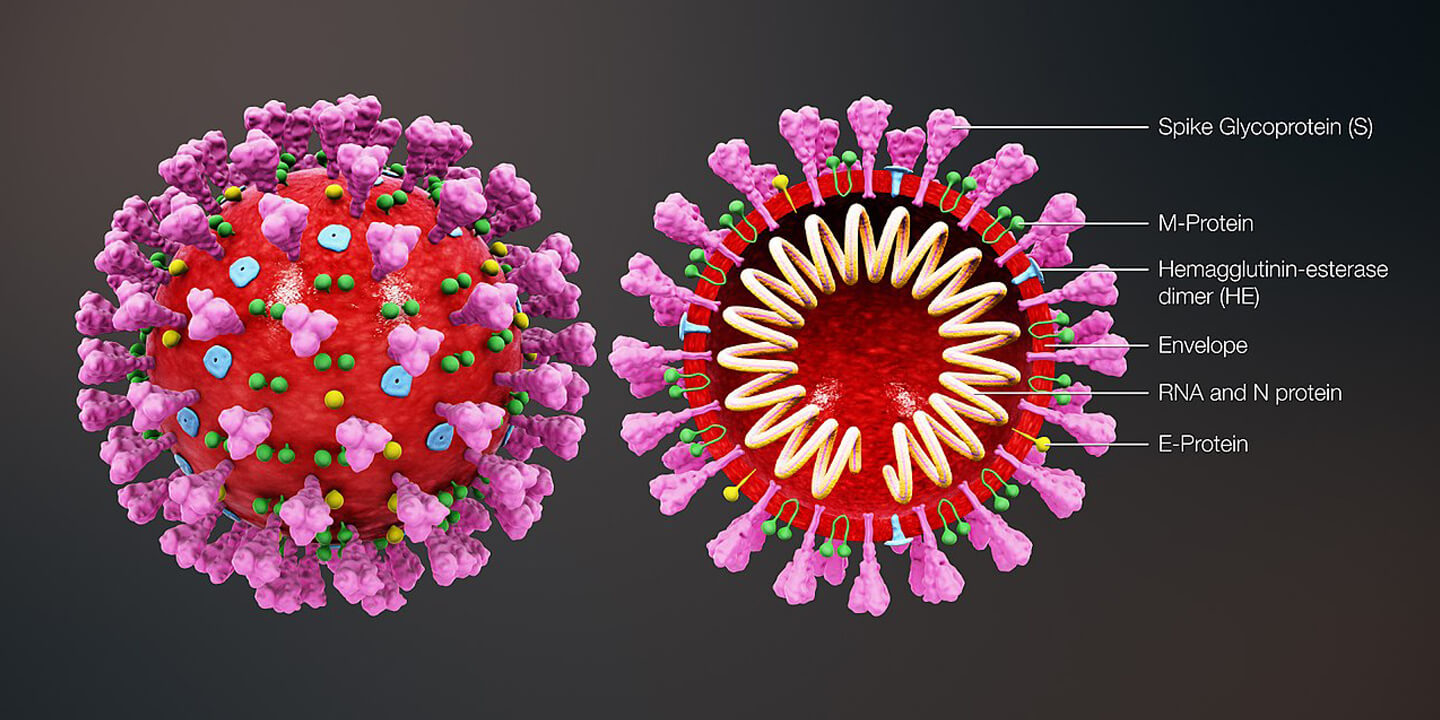Journey to the Center of the Virus: what SARS-CoV-2 looks like

Publication date: 07-04-2021
Updated on: 16-05-2025
Topic: Covid-19
Estimated reading time: 1 min
Article Author
Eufemia PutortiMedical Editor
Guido PoliMedical Editor
Elisa Vicenzi
Editor and Translator
Viktoryia Luhakova“Coronavirus” is a large family of viruses known to cause illness ranging from the common cold to more serious illness such as Middle East Respiratory Syndrome (MERS) and Severe Acute Respiratory Syndrome (SARS).
Coronaviruses were identified in the mid-1960s and are known to infect humans and some animals (including birds and mammals).
In December 2019, a new virus belonging to this family, called SARS-CoV-2, was isolated in Wuhan, China. The viral sequence of this new Coronavirus has a homology of approximately 76% compared to the virus that caused the SARS pandemic in 2002/2003, so the two viruses are very similar. How is this virus composed? What structure does it have?
The structure of the "novel Coronavirus"
To analyze its structure we will use the following illustration, which shows a virion (the single viral infectious particle) complete and in section.

Coronaviruses have a rounded morphology and dimensions of 100-150 nm in diameter (about 600 times smaller than the diameter of a human hair!).
Starting from the outermost layer and progressing gradually towards the inside of the virus, it is possible to notice several components:
- S (“spike”) Glycoprotein: the virus shows projections on its surface, with a length of about 20 nm. These projections are formed by glycoprotein S (for “spike”). Three S glycoproteins joined together make up a trimer; the trimers of this protein form the structures which, taken together, resemble a corona surrounding the virion. The main differences of this new Coronavirus compared to the SARS virus seem to be located precisely in this spike protein. The glycoprotein S is the one that determines the specificity of the virus for the epithelial cells of the respiratory tract: the 3D model in fact suggests that SARS-CoV-2 is able to bind the ACE2 receptor (angiotensin converting enzyme 2), expressed by the cells of the capillaries of the lungs
- M-Protein: the membrane protein (M) crosses the envelope interacting within the virion with the RNA-protein complex
- Hemagglutinin esterase (HE) dimer: this coating protein, smaller than glycoprotein S, plays an important role during the virus release phase inside the host cell
- E-Protein: the expression of this protein helps glycoprotein S (and therefore the virus) to attach itself to the membrane of the target cell
- Envelope: it is the envelope of the virus, consisting of a membrane that the virus “inherits” from the host cell after the infection
- RNA and N-protein: the Coronavirus genome consists of a single strand of RNA with a large positive polarity (from 27 to 32 kb in the different viruses); no larger sized RNA viruses are known. RNA gives rise to 7 viral proteins and is associated with the N protein, which increases its stability